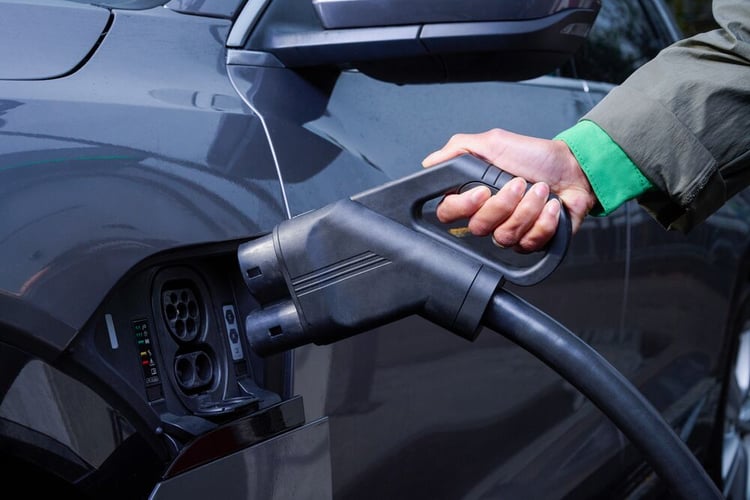
What UK's Electric Vehicle Infrastructure Strategy means for drivers
By now it’s no longer a surprise that electric vehicles (EVs) are going to be the new norm of road transportation. In line with many other governments around the world, by 2030 the UK intends to ban the sale of petrol and diesel vehicles. The automotive industry has been embracing this change, with many of the world's most popular car manufacturers making the transition to electric.
While it's evident that there has been an increase in the number of electric cars on our roads, the availability of electric car charging points is, however, something else. As the UK government acknowledges the many challenges facing electric car charging infrastructure, they have set out their official plans to support this industry with the Electric Vehicle Charging Infrastructure Strategy policy paper, which plans to ensure at least 300,000 public charging points are installed by 2030.
This article is written to break down the vision of this proposed action plan and explain what these changes mean for the future of EV drivers in the UK.
UK's EV charging infrastructure in 2022
Before diving into the newly proposed strategy, we can first explore the current state of the UK public charging infrastructure.
According to ZapMaps, as of March 2022, there are over 30,000 public charging stations at over 19,000 locations across the UK. Of this number, there are a total of over 5,400 public fast charging stations at over 3,300 locations. On average, 600 chargers are added to the UK roads a month, with 100 of those being fast chargers. This charging infrastructure is responsible for serving around 750,000 plug-in vehicles.
Comparing these numbers to the 8,000 petrol stations in the UK, which currently serve around 37 million petrol and diesel vehicles, 19,000 public charging station locations may sound like a lot. However, not only do petrol stations often have more pumps on location than the average charging location has charging stations, but shorter refuelling times also allow for a much quicker flow of vehicles in and out of the petrol station.
Therefore, according to the policy paper, there needs to be at least four times the number of public electric car charging points by 2030 to cater to forecasted numbers of electric cars.

The seven focus areas of the Electric Vehicle Charging Infrastructure Strategy
So, what does the Electric Vehicle Charging Infrastructure Strategy set out to achieve, and what can future EV drivers expect? We've identified the seven focus areas of the policy paper which define the government's vision for the future of the UK's charging infrastructure.
1. Access to reliable public charging points
The first focus area is set on ensuring that ‘everyone can find and access reliable public charge points wherever they live'. Around the UK, there are significant regional disparities in charging infrastructure deployment. As charging point rollout has been primarily market-led, there is reliance on there being commercial models to uphold on-street residential chargers.
In other words, in areas where business is not attractive, the installation of charging infrastructure has been reluctant, or in some cases, avoided altogether resulting in major development in some areas, and others without any.
For EV drivers, the new policy, therefore, aims to overcome these issues and ensure wherever you are located in the UK, be it a densely populated city or within a remote village, you will have access to public charging stations.

2. On and off-street charging for all drivers
The second focus area revolves around providing ‘effortless on and off-street charging for private drivers and businesses'. For the majority of EV drivers, charging from home on a regular basis will be the norm, and already is for those who currently own an electric car.
However, for many, charging at home is not possible. This could be due to living in homes without off-street parking or living in flats or shared accommodation wherein charging facilities are not provided. For the transition to electric mobility, this provides a significant deterrent for those who may consider purchasing an electric car.
Therefore, for those where home charging is not possible, the policy paper wants EV drivers to have easy access to public charging points near their homes with on and off-street charging options. In addition, EV drivers should also expect to see charging points popping up at destinations such as supermarkets, gyms, and workplaces to offer other alternatives to home charging.
3. Network of high powered chargers along major roads
The third focus area intends on the development of ‘a reliable network of high powered chargepoints along major roads’. As of March 2022, there was a total of over 5,400 public rapid charging stations at over 3,300 locations.
However, just over 2,000 of these chargers are located along the UK's strategic road network. Therefore, by 2035, the policy paper proposes at least 6,000 high powered chargers across the main roads and motorways in England.
For EV drivers, this means there will be at least as much choice of being able to fast charge on long journeys as you can expect from filling up at a petrol station. Having the ability to top-up within the time it takes to drink a coffee will also mean that EV drivers will not need to invest in the most expensive electric cars—those with the biggest batteries and the longest range—in order to make longer journeys.

4. Fairly priced and inclusively designed public charging
The fourth focus area wants to commit to providing ‘fairly priced, inclusively designed public charging, trusted by consumers’. Not only does a good charging infrastructure need to provide for EV drivers without off-street parking at home, it also needs to ensure those people interested in making the switch to electric mobility can do so without facing disproportionate charging costs.
Therefore, the policy paper wants to ensure EV drivers will have access to affordable and fairly priced public charging which is driven by competition between charge point operators trying to keep prices down and quality of service high.
Furthermore, the government wants to install charging points that are inclusively designed for all EV drivers. This means meeting standards for disability access, as well as, not providing inconvenience to other users of roads and pavements. Instead, they will be incorporated consciously and safely into their environment.
5. Market-led rollout for the majority of charging points
The fifth focus area intends for ‘market-led rollout for the majority of chargepoints, driven by competition’. For the UK's charging infrastructure this means that the government will allow for the private sector to lead on charging point rollout.
They expect institutional investors, amongst others, to identify business opportunities and take advantage of the huge growth potential of this market. For those areas of the UK which do not show signs of being commercially viable, the government will allocate public funds to ensure no part of the country is left behind.
This means that charging stations should see a faster rollout across all areas of the UK. For EV drivers, faster rollout of charging points means more options to charge, as well as less competition for charging spaces as the number of electric cars on the road also increases.

6. Integrated smart energy system
The sixth focus area requires ‘infrastructure seamlessly integrated into a smart energy system’. What is a smart energy system you may ask?
Firstly, in regards to EV charging, smart charging refers to all features that optimise EV charging infrastructure and minimise the load impact (demand for electricity) of EVs. It works by controlling the power, timing, and direction of individual charging sessions, and takes into account customer and vehicle needs, infrastructure limitations, renewable energy generation, electricity costs, grid conditions, and ancillary grid service markets. By integrating smart charging into the charging infrastructure, EV drivers can benefit from an increasingly smart energy system.
So what does this mean for EV drivers? With a smart energy system, EV drivers can benefit from the management of energy demand, and in turn, can reduce charging costs. For example, off-peak charging allows for drivers to schedule their vehicle to charge during times of the day when energy demand is far less—e.g. at night—and therefore cheaper.
7. Innovation to meet drivers’ needs
The final focus concerns allowing ‘continued innovation to meet drivers’ needs’. Here, the policy paper highlights that the regulatory framework will support the deployment of new and innovative solutions that benefit EV drivers and wider society.
For example, there are talks that scientists at Harvard University are in the midst of exploring a new battery technology that can lead to electric cars being charged in as little as 10 minutes.
For EV drivers, access to this technology, and any other technology that may emerge in the future, will be supported by the government so that EV drivers can reap the benefits.

So what can EV drivers expect?
After looking through the UK's Electric Vehicle Infrastructure strategy, we can see that there is acknowledgement by the government that electric cars are the future of our roads. However, in order to ensure this transition to electric mobility is fair and beneficial, there needs to be a carefully structured vision and an action plan behind the rollout of the EV charging infrastructure.
For the future, and particularly by 2030, all UK EV drivers should expect to see our major roads, streets, and car parks, both public and commercial, littered with charging points, offering affordable, reliable, and easy-to-use options catering to all drivers needs.
If you are interested in finding out how the government plans on delivering upon the charging infrastructure vision, then you can find the full report here.
Related articles

Is DC fast charging bad for your EV battery?
While there is research that shows that frequent rapid (DC) charging can somewhat degrade the battery quicker than AC...

5 things you didn't know about EV batteries
There’s little doubt that electric mobility is the future. Electric vehicle (EV) sales have skyrocketed in the past few...

Electric car battery weight explained
How much an electric vehicle (EV) battery weighs depends greatly on the vehicle and model. On average, however, EV...